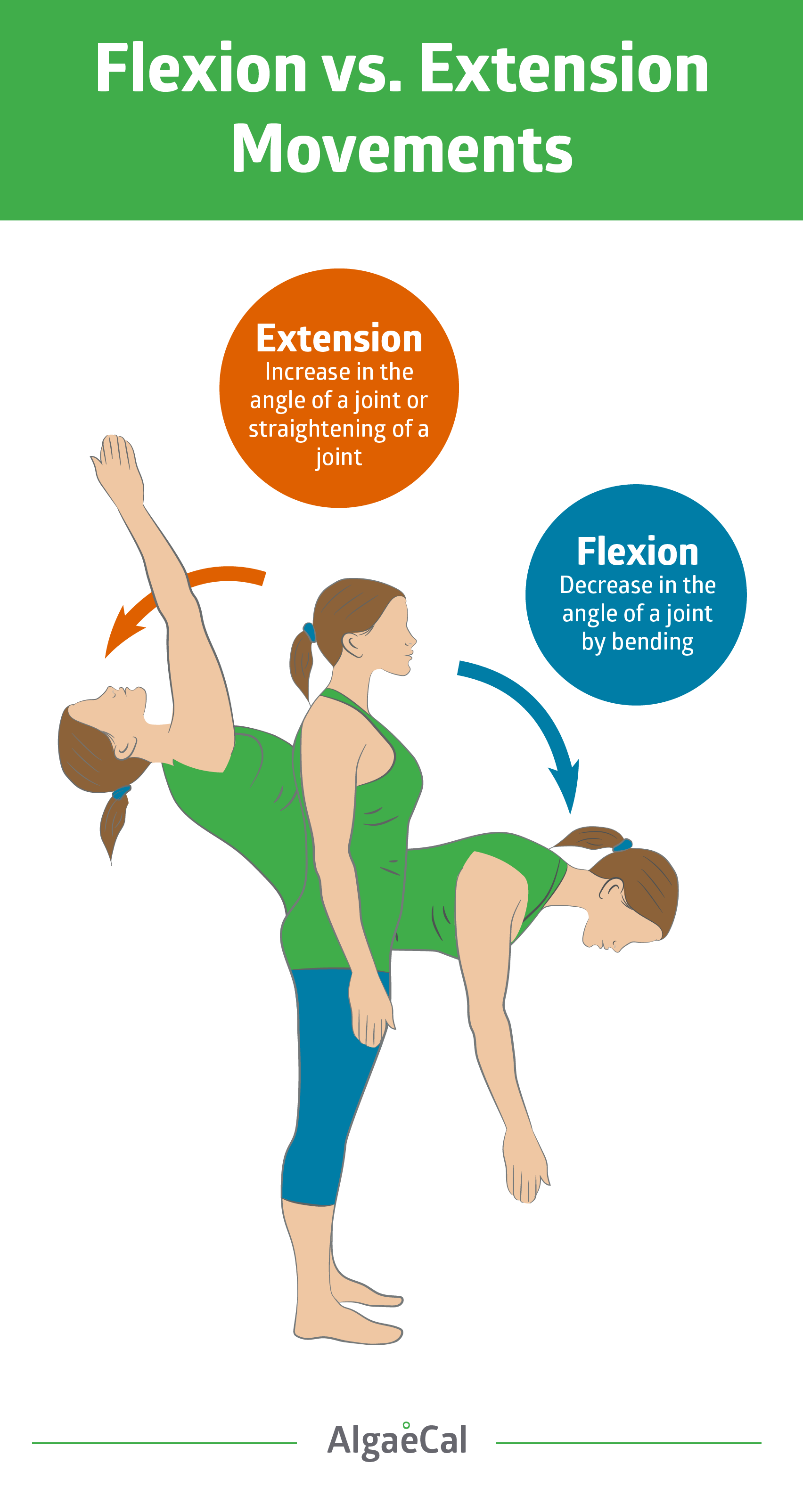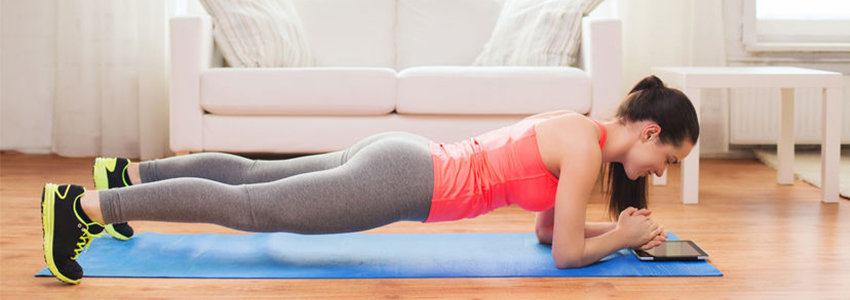Your abdominals are what allow you to sit straight, stand upright, and pretty much function as an able-bodied person. Core strength is also incredibly important to your overall balance and mobility because those muscles attach to your hips and pelvis.
Balance and mobility are vital to staying healthy and fit into your golden years. Poor balance is a leading cause of falls and fractures while staying mobile and able allows you to perform bone-healthy weight-bearing exercises.
We love weight-bearing exercises because they are great for building and maintaining bone density, and often don’t require a gym or fitness equipment. These exercises are also low impact, which makes them more suitable for people suffering from osteoporosis.
In this post, I’m going to teach you about one of my favorite osteoporosis-friendly exercises — the plank! By practicing the perfect plank, you will slowly improve your balance and posture. And the best part is, you can do these exercises in the comfort of your own home.
In the following exercises I use:
- a yoga mat
- a Bosu ball
Benefits of Core Strength for Osteoporosis
Core exercises use the muscles around the midsection which include the pelvic floor, abdominal, and spinal muscles.
By improving your core strength, you get the added bonus of improving your:
- balance
- spinal strength
- pelvic strength
- ease of day-to-day activities
- posture
The key to strengthening your abdominals, particularly if you’re older or have osteoporosis, is to make sure you’re safely gaining strength. That means in addition to knowing which movements are okay for you to do, you need to know which ones are best to avoid.
The most damaging movements to delicate spines involve twisting and bending (flexion). There’s a finite range of motion in your spine, and pushing that range too far can result in fractures and muscle strain.
And these unsafe motions extend beyond the gym. Sports like skiing and golf can be especially punishing to your spine. A study comparing 59 postmenopausal women with osteoporosis looked at the impact of extension exercises (increase in the angle of the joint or straightening of a joint) compared to flexion exercises (decrease in the angle of a joint by bending). The study found that only 16% of extension participants suffered vertebral compression fractures in six years of follow-up exams. That’s compared to 89% of flexion participants, 53% of those that did extension and flexion, and 67% of the sedentary control group.
Researchers concluded that extension and isometric exercises (joint angle and muscle length do not change during contraction) are more appropriate for postmenopausal patients with osteoporosis.
 The following are core-related exercises that you should avoid.
The following are core-related exercises that you should avoid.
Forward Flexion Exercises to Avoid:
- Crunches: Also known as sit-ups, crunches are a popular way to strengthen the abdominal muscles. However, for those with osteoporosis it can increase your risk of vertebral fractures because of the pressure it puts on the spine and because of the hip hinge position. This is particularly hard on the spine if you do raised-leg crunches.
- Lumbar rolls: This is a common movement in yoga where you lie down with your back on the mat and bring your knees into your chest with your hands, curving your spine. Then, you gently roll back and forth in a see-saw motion. This not only incorporates the dreaded forward flexion of the spine, but it also adds loading where even more strain is put onto your spine. This further increases risk of fracture.
Side-Bending Exercises to Avoid:
- Standing side bend: The standing side bend has you stand with your feet shoulder-width apart and your arms by your sides. While keeping your back straight, you bend at the waist left or right as far as is comfortable. Pause, then come back up. However, this movement describes lateral flexion, which again, puts a load on certain parts of the spine at risk for fracture.
Rotational core exercises to avoid:
- Russian Twist*: Chances are you’ve done your fair share of Russian Twists, even if it’s just in your day-to-day life grabbing something beside you off the counter. But if you suffer from osteoporosis, this is definitely an exercise you want to avoid as it combines full flexion of your spine and adds rotation.
- Lunge with a twist*: This pose strengthens and stretches the abdominals, quadriceps, hips, and thighs. However, the added twist rotation can put a strain on your back and can easily lead to injury.
*Twists done at moderate range, in gentle motion with a long spine may be safe. However, the National Osteoporosis Foundation cautions against “twisting of the spine to a point of strain.” So be aware of your body and its limitations – do not exaggerate the twist, which can compromise your spine.
It may seem like a long list of movements to avoid, but it’s because they all involve the same bending and twisting motions. But bending and twisting aren’t the only ways to engage your core and strengthen your abdominal muscles.
Keep reading to learn about our top three movements to strengthen your core that don’t require bending, side collapsing or rotational movements.
3 Easy and Modifiable Planking Exercises for Bone Strength
We love these exercises because they’re modifiable. Not only for people of various fitness levels but for people with varying degrees of bone density. And while we feel these are osteoporosis-safe movements, always check with your doctor or physiotherapist before starting a new exercise regime.
And of course, if you feel any pain during any of these exercises, STOP!
The Forearm Plank
This is one of the most common variations of the plank and is an isometric hold. This exercise can be made easier by performing on bent knees or by angling your body up on an elevated bench or a platform.
- Place your forearms directly under your shoulders, a bit wider than shoulder-width apart.
- You can either clasp your hands together (which is what I’m doing here) or you can lay your palms down flat on the mat.
- Lift from your knees first, then tuck your toes into the floor and push up. Make sure your glutes and body are squeezed and stabilized. Do not lock your knees!
- Your head should be in line with your spine. You can either look down towards the ground or straight ahead.
- Hold for 10-20 seconds, then lower yourself slowly down.
- Repeat 3-5 times.
Advanced: Once you’ve mastered the forearm plank, try the standard plank. This plank goes one step further by holding your entire body up with your hands instead of your forearms. You can also add weights to your hips (ie: sandbags) or alternate by raising one foot off the floor.
The Bent-Knee Side Plank
Here your core and leg muscles are being exercised isometrically – but they can also be performed as a dynamic movement by moving your hips up and down.
- Lie on your side on your mat.
- Place your right forearm under your shoulder on the mat, perpendicular to your body.
- Bend your right knee and place your left leg on top of the bottom leg (straight out).
- Straighten your hips.
- Engage and stabilize your core and lift your body upwards while keeping your hips and spine in line.
- Raise your left arm to the ceiling.
- Hold for 20–30 seconds, then lower yourself slowly down.
- Repeat 3–5 times.
Advanced: Once you’ve mastered the bent-knee side plank, try the regular side plank. Instead of using the bottom leg for support, both legs will be straight when you lift your body.
The Stir The Pot Plank
This exercise targets every muscle in your core, as well as your forearms, shoulders, and glutes.
Before you attempt this exercise, make sure you have mastered the forearm plank, the standard plank, the bent-knee side plank, and the side plank. Keep in mind that your form for stir the pot and other planks are the same. Remember to keep your core engaged and spine stabilized – meaning no arching or hunching.
- Place your knees shoulder-width apart and kneel on the mat.
- Place a medium Bosu ball a few inches in front of you.
- Reach out and place your forearms on the ball at a 90-degree angle.
- Make sure your core is stabilized and engaged and start ‘stirring’ by making circular movements with the ball.
- Do 10 circles clockwise, then switch and do 10 circles counter-clockwise.
- Break and repeat 3–5 times.
Advanced: once you have mastered this exercise, plank your entire body with the Bosu ball (meaning your knees are no longer on the mat — raise your whole body). In addition, you can also make bigger circles. You’ll see that there is slight flexion from the waist, but not the back or spine, which is where you want to avoid flexion.
Common Planking Mistakes & How to Fix Them
Again, it’s all about safety. On top of doing appropriate exercises based on your health and range of motion, you need to know how to do those exercises properly.
Every time you exercise, keep the following in mind:
- Choose a comfortable position
- Focus on correct technique
- Activate deep abdominal muscles gently
- Listen to your body and modify accordingly
- Progress steadily but gradually
Plus three more specific to planking…
- Don’t forget to breathe! It’s common to hold your breath when you are in a strenuous pose for an extended period of time. But don’t deny your body of oxygen. This can bring on dizziness or nausea. Remember to breathe in through your nose and out through your mouth.
- Don’t collapse your lower back! Focus on engaging your core at all times. You put stress on your lower back when it collapses and dips below your hips. To combat this, engage your core by pulling your belly button towards your spine. This will protect you and keep your spine safe.
- Don’t reach your butt to the sky! Don’t dip your butt too low or high (it’s not meant to look like downward dog). Aim for your back to be flat enough where you can feel your core being engaged from the very top to the bottom.
Planking is a great exercise to strengthen your core and help support your spine, but it’s just one of many osteoporosis-friendly exercises you can try.
For more osteoporosis-safe exercises, check out our exercise blog posts, including Hip Strengthening Exercises You Can Do Anytime, Anywhere and our Ultimate Guide to Yoga for Osteoporosis.





Gina vslle
July 8, 2016 , 8:41 amHolding the blank position on the floor for 60 seconds x 3 sets. You will strengthen your back abs and obliques. If you place your hands up by your forehead you will be toning lower abs . Enjoy!